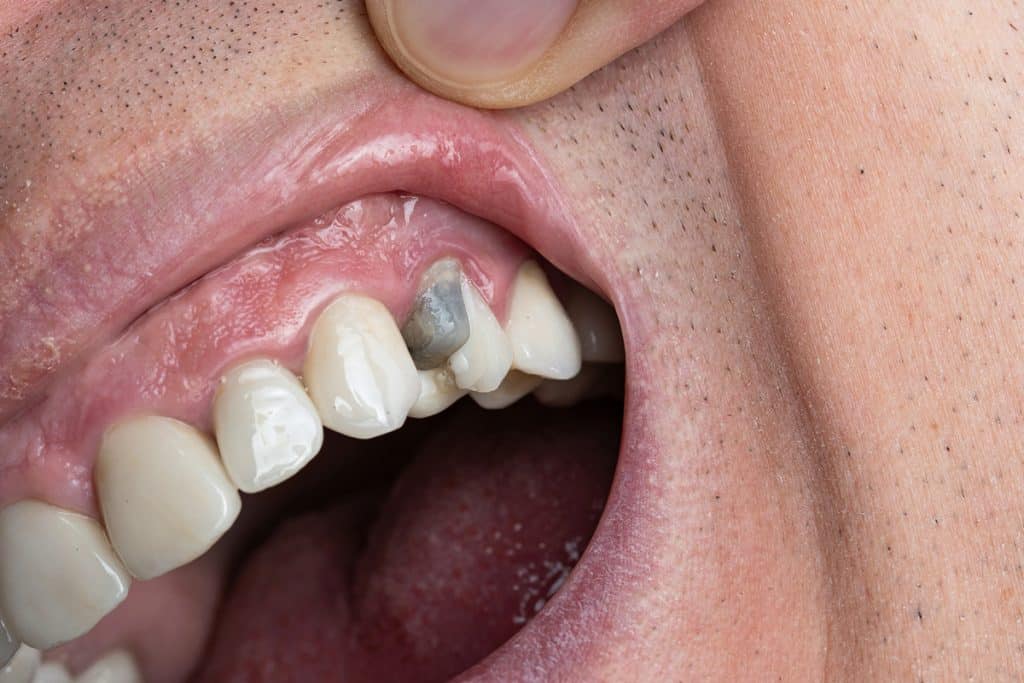Temporary Crown Fell Off – What Should You Do?

It’s a startling moment: you’re eating, brushing your teeth, or just going about your day, and suddenly you feel something hard and tooth-shaped in your mouth. Your temporary crown has fallen off. While it can be alarming, we want to assure you that this situation is quite common and manageable. A temporary crown is precisely that—temporary. Dentists place it to protect your prepared tooth and prevent sensitivity while your permanent crown is custom-made in a dental lab. Because your dentist secures it with a weaker, temporary cement, it's not designed for long-term durability.
Losing a temporary crown is not a major dental emergency, but it does require prompt attention. The underlying tooth is vulnerable without its protective covering. It can be exposed to bacteria, temperature changes that cause sensitivity, and pressure that could cause it to shift. Taking the right steps immediately after it falls out can protect your tooth, minimize discomfort, and ensure your permanent crown fits perfectly when it’s ready. In this guide, we’ll walk you through exactly what to do, why it might have happened, and how to care for your tooth until you can see us.
Why Did My Temporary Crown Fall Off?
Understanding why a temporary crown might come loose can help you prevent it from happening again. As we mentioned, the cement used for these crowns is intentionally not as strong as the permanent version. This choice of cement allows us to easily remove the temporary crown when your permanent one is ready to be placed. However, certain factors can cause it to dislodge sooner than planned.
Common Causes for a Loose Temporary Crown
One of the most frequent culprits is your diet. Chewing on hard, sticky, or tough foods can place excessive force on the temporary crown, breaking the weak seal of the cement. Foods like hard candies, caramel, taffy, tough meats, or even very crunchy bread can pull the crown right off the tooth. Another common reason is aggressive flossing or brushing. When you floss, it's important to slide the floss out from the side of the tooth rather than pulling it up, as the upward motion can catch the edge of the crown and lift it off. Similarly, vigorous brushing can sometimes weaken the bond over time. In some cases, the way your teeth come together when you bite or grind can also contribute to this issue. If the temporary crown is a little too high, the repeated pressure from your bite can cause it to work loose.
What to Do Immediately After It Falls Out
The first step is simple: don't panic. Carefully remove the crown from your mouth to avoid swallowing or biting down on it. Once you have it, inspect both the crown and your tooth. If the crown is hollow and largely intact, that’s a good sign. If it’s broken into pieces, you won't be able to reuse it. Next, look at your tooth in a mirror. You are looking to see if the tooth itself appears to be intact or if a piece of it has broken off inside the crown.
Steps to Take Right Away
Your next action should be to call our dental office. Even if it's after hours, leave a message explaining what happened. We need to see you as soon as possible to either re-cement the temporary crown or make a new one. Delaying your visit can cause problems. Without the crown, your tooth is exposed and may become very sensitive to hot, cold, or sweet things. More importantly, your teeth can shift slightly in just a few days. This movement could prevent your permanent crown from fitting correctly, potentially requiring new impressions and a longer wait. While you wait for your appointment, keep the crown in a safe, clean place, like a small container or zip-top bag. Keeping the area clean by gently brushing the exposed tooth and rinsing with warm salt water can also help reduce the risk of irritation.
How to Temporarily Reattach Your Crown at Home
If you cannot get to our office right away and are experiencing sensitivity, you may be able to temporarily secure the crown yourself. Please note this is only a short-term fix to protect the tooth until your appointment. You should never use permanent adhesives like superglue, as they can damage the tooth and make it impossible for us to properly place your permanent crown.
Safe At-Home Solutions
You can find temporary dental cement at most drugstores or pharmacies. These products are designed for this exact situation. Before attempting to reattach the crown, you need to prepare both the crown and the tooth. Gently clean the inside of the crown with a toothbrush or cotton swab to remove any old cement and debris. Rinse your mouth and gently dry the prepared tooth with a piece of gauze. Place a small amount of the temporary cement inside the crown, then carefully position it over your tooth, making sure it is aligned correctly. Bite down gently but firmly for a few moments to set it in place, and wipe away any excess cement that squeezes out. Remember, this is not a permanent solution, and you still need to see us to have it professionally re-cemented. This temporary fix provides protection and reduces sensitivity until you can receive proper care for your dental crowns.
Protecting Your Smile Until Your Appointment
Once you’ve addressed the immediate issue, your focus should be on protecting the tooth and the temporary crown (if you were able to reattach it) until you see us. The goal is to avoid any further complications. Be mindful of what you eat, sticking to soft foods and avoiding the side of your mouth with the affected tooth. Avoid anything overly hot, cold, or sugary if you are experiencing sensitivity.
Caring for Your Vulnerable Tooth
Proper oral hygiene remains crucial, but it's essential to be gentle. When brushing, use a soft-bristled toothbrush and be careful around the affected area. If you reattached the crown, brush it gently. When flossing, do not pull the floss up between the teeth. Instead, carefully slide it out to the side to avoid dislodging the crown again. If the crown is off and you cannot reattach it, keeping the exposed tooth clean is very important. Rinsing your mouth with an antiseptic mouthwash or a warm saltwater solution can help keep bacteria at bay and soothe any gum irritation. By taking these precautions, you help ensure that your final appointment to place your permanent crown goes smoothly and without any unexpected setbacks.
Frequently Asked Questions About Dental Crowns
What happens if I swallow my temporary crown?
Swallowing a temporary crown is usually not a cause for alarm. Because it is small and has smooth edges, it will typically pass through your digestive system without any issues within a few days. The materials are non-toxic. However, it is still essential to call our office right away to let us know. We will need to schedule an appointment to create a new temporary crown to protect your tooth until your permanent one is ready.
Can I just leave the temporary crown off until my next appointment?
We strongly advise against leaving the temporary crown off for an extended period. The temporary crown serves several important functions: it protects the vulnerable, prepared tooth from bacteria and decay; it reduces sensitivity to temperature and food; and it prevents the adjacent and opposing teeth from shifting. If your teeth move, even slightly, your custom-made permanent crown may no longer fit, which could delay your treatment and add extra cost. Always call us immediately for guidance.
At Davis Gribble Hollowwa Dental, we provide exceptional dental care to families and individuals throughout Albuquerque. Our experienced team combines advanced technology with a compassionate approach to help you achieve and maintain a healthy, beautiful smile. If you have any questions or need to schedule an appointment, please don’t hesitate to contact us.

